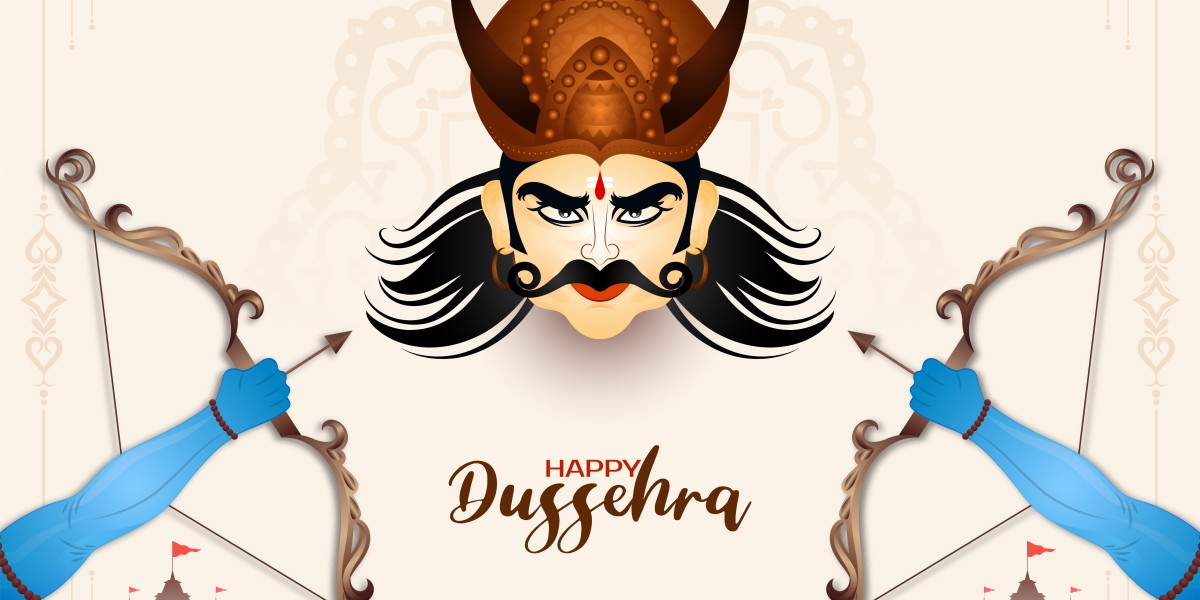Dusshera, also known as Vijayadashami, is one of India’s most significant festivals. It marks the victory of good over evil and is celebrated with great enthusiasm across the country. Interestingly, Dusshera is celebrated right after Navratri, a nine-day festival dedicated to worshipping Goddess Durga. But why exactly is Dusshera celebrated after Navratri? Let's dive into the cultural and spiritual reasons behind this sequence and how the two festivals are deeply connected.
The Significance of Navratri
Navratri, which means “nine nights,” is a festival where devotees worship the nine forms of Goddess Durga. Each day of Navratri honors a different aspect of the goddess, symbolizing various qualities like strength, wisdom, and courage. The festival is not just about rituals but also about spiritual cleansing, fasting, and focusing on overcoming our inner weaknesses or evils.
During these nine days, devotees pray for protection and the goddess’s blessing to remove obstacles from their lives. It’s a period of introspection and devotion, where people aim to purify their minds and souls.
The Connection Between Navratri and Dusshera
After nine days of worship and devotion in Navratri, comes Dusshera on the tenth day. Dusshera marks the triumph of good over evil and is celebrated to commemorate Lord Rama’s victory over the demon king Ravana. The celebration of Dusshera after Navratri has deep-rooted mythological and spiritual significance.
Victory After Devotion: Navratri symbolizes the fight against negative forces, both within and outside us. After nine days of worshipping Goddess Durga, Dusshera symbolizes the final victory over these negative forces. In Hindu mythology, Goddess Durga fought for nine days against the demon Mahishasura, and on the tenth day, she finally defeated him, symbolizing the victory of good over evil. This victory is echoed in Dusshera, where Lord Rama defeated Ravana after intense preparation.
Lord Rama’s Victory: According to the Ramayana, the epic story of Lord Rama, the battle between Lord Rama and Ravana lasted for ten days. During these days, Rama sought the blessings of Goddess Durga to gain the strength and wisdom to defeat Ravana. After worshipping the goddess during the nine days of Navratri, he finally killed Ravana on the tenth day, which is celebrated as Dusshera or Vijayadashami.
Symbolic Journey: The sequence of Navratri followed by Dusshera represents a symbolic journey. Navratri is about inner cleansing and seeking blessings, while Dusshera is about applying that inner strength to defeat the evils around us. It’s a reminder that after self-reflection and devotion, we are better equipped to handle the challenges life throws at us.
How Dusshera is Celebrated
Dusshera is celebrated in various ways across India. In the northern parts, large effigies of Ravana, symbolizing evil, are burned in open fields to depict the victory of good over evil. In the south, it’s a time for worship, feasting, and cultural performances. In the east, especially in West Bengal, Dusshera is celebrated as the final day of Durga Puja, where idols of Goddess Durga are immersed in water to mark the end of the festival.
For businesses and workplaces, Dusshera is often a time to celebrate and foster unity among employees. Dusshera celebration in the office often includes decorating the workspace, conducting special pujas, and organizing small festivities to bring the team together. It’s an opportunity for companies to create a positive environment and reinforce the values of teamwork and success, much like the festival’s theme of triumph.
Dusshera Celebration in Office
In modern times, Dusshera celebrations have also found their place in offices. Many workplaces organize small events to engage employees and bring the festive spirit into the office. Here are some common ways Dusshera is celebrated in offices:
Puja and Decoration: Offices may host a small Dusshera puja to mark the auspicious occasion. The office is often decorated with flowers and lights, creating a festive atmosphere that uplifts the team’s mood.
Team Building Activities: Offices sometimes organize games or activities based on the festival’s theme of good vs. evil. This could include storytelling sessions about the Ramayana or even fun quizzes about the festival.
Cultural Performances: In some organizations, employees participate in small cultural performances or skits that depict the story of Lord Rama and Ravana. It’s a way to celebrate the festival while also educating everyone about its significance.
Festive Snacks: No festival is complete without food, and Dusshera is no exception. Offices may distribute sweets or organize a small festive lunch to make the day even more special.
These celebrations not only mark the occasion but also help build a sense of community and belonging among employees, aligning with the festival’s message of unity and victory.
Conclusion
Dusshera, celebrated after Navratri, holds great significance in Hindu culture. The festival is a reminder that after dedication, devotion, and introspection (as seen during Navratri), we are ready to face and overcome the challenges that life presents. The celebration of Dusshera symbolizes this victory, both in mythological stories and in our personal lives.
Whether celebrated at home or in the workplace, the festival of Dusshera encourages us to believe in the triumph of good over evil and to continue working towards personal and collective success. So, whether you're burning an effigy of Ravana or enjoying a Dusshera celebration in office, the message of the festival remains the same: light will always triumph over darkness.



